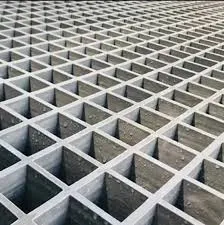
-
 Afrikaans
Afrikaans -
 Albanian
Albanian -
 Amharic
Amharic -
 Arabic
Arabic -
 Armenian
Armenian -
 Azerbaijani
Azerbaijani -
 Basque
Basque -
 Belarusian
Belarusian -
 Bengali
Bengali -
 Bosnian
Bosnian -
 Bulgarian
Bulgarian -
 Catalan
Catalan -
 Cebuano
Cebuano -
 China
China -
 China (Taiwan)
China (Taiwan) -
 Corsican
Corsican -
 Croatian
Croatian -
 Czech
Czech -
 Danish
Danish -
 Dutch
Dutch -
 English
English -
 Esperanto
Esperanto -
 Estonian
Estonian -
 Finnish
Finnish -
 French
French -
 Frisian
Frisian -
 Galician
Galician -
 Georgian
Georgian -
 German
German -
 Greek
Greek -
 Gujarati
Gujarati -
 Haitian Creole
Haitian Creole -
 hausa
hausa -
 hawaiian
hawaiian -
 Hebrew
Hebrew -
 Hindi
Hindi -
 Miao
Miao -
 Hungarian
Hungarian -
 Icelandic
Icelandic -
 igbo
igbo -
 Indonesian
Indonesian -
 irish
irish -
 Italian
Italian -
 Japanese
Japanese -
 Javanese
Javanese -
 Kannada
Kannada -
 kazakh
kazakh -
 Khmer
Khmer -
 Rwandese
Rwandese -
 Korean
Korean -
 Kurdish
Kurdish -
 Kyrgyz
Kyrgyz -
 Lao
Lao -
 Latin
Latin -
 Latvian
Latvian -
 Lithuanian
Lithuanian -
 Luxembourgish
Luxembourgish -
 Macedonian
Macedonian -
 Malgashi
Malgashi -
 Malay
Malay -
 Malayalam
Malayalam -
 Maltese
Maltese -
 Maori
Maori -
 Marathi
Marathi -
 Mongolian
Mongolian -
 Myanmar
Myanmar -
 Nepali
Nepali -
 Norwegian
Norwegian -
 Norwegian
Norwegian -
 Occitan
Occitan -
 Pashto
Pashto -
 Persian
Persian -
 Polish
Polish -
 Portuguese
Portuguese -
 Punjabi
Punjabi -
 Romanian
Romanian -
 Russian
Russian -
 Samoan
Samoan -
 Scottish Gaelic
Scottish Gaelic -
 Serbian
Serbian -
 Sesotho
Sesotho -
 Shona
Shona -
 Sindhi
Sindhi -
 Sinhala
Sinhala -
 Slovak
Slovak -
 Slovenian
Slovenian -
 Somali
Somali -
 Spanish
Spanish -
 Sundanese
Sundanese -
 Swahili
Swahili -
 Swedish
Swedish -
 Tagalog
Tagalog -
 Tajik
Tajik -
 Tamil
Tamil -
 Tatar
Tatar -
 Telugu
Telugu -
 Thai
Thai -
 Turkish
Turkish -
 Turkmen
Turkmen -
 Ukrainian
Ukrainian -
 Urdu
Urdu -
 Uighur
Uighur -
 Uzbek
Uzbek -
 Vietnamese
Vietnamese -
 Welsh
Welsh -
 Bantu
Bantu -
 Yiddish
Yiddish -
 Yoruba
Yoruba -
 Zulu
Zulu
frp sheet
FRP Sheets Revolutionizing Modern Construction and Design
Fiber Reinforced Polymer (FRP) sheets have emerged as a game-changing material in the fields of construction and design. Composed of a polymer matrix reinforced with fibers, typically glass, carbon, or aramid, FRP sheets offer numerous advantages over traditional building materials. As industries seek lighter, stronger, and more durable solutions, the popularity of FRP continues to soar.
One of the most significant advantages of FRP sheets is their high strength-to-weight ratio. They are incredibly light while maintaining exceptional strength, making them ideal for applications where weight is a critical factor. This property is particularly beneficial in sectors such as aerospace, automotive, and civil engineering, where reducing weight can lead to improved fuel efficiency, reduced emissions, and enhanced overall performance.
FRP Sheets Revolutionizing Modern Construction and Design
Furthermore, FRP sheets offer design flexibility that is hard to match. They can be easily molded into various shapes and sizes, allowing architects and engineers to push the boundaries of their designs. This adaptability is particularly advantageous in modern architecture, where innovative and aesthetically pleasing structures are in high demand. FRP sheets can be used for everything from cladding and facades to flooring and furniture, enabling the creation of unique, functional spaces that stand out.
frp sheet

Another compelling feature of FRP sheets is their thermal insulation properties. They have low thermal conductivity, which helps maintain comfortable indoor temperatures and reduces energy consumption for heating or cooling. This quality is increasingly important as building codes become stricter regarding energy efficiency. By integrating FRP sheets into building designs, developers can achieve both functional and sustainable solutions.
Moreover, the ease of installation of FRP sheets cannot be overlooked. Their lightweight nature simplifies transportation and on-site handling, reducing labor costs and time required for installation. Many FRP sheets can be cut to size and assembled quickly, making them a preferred choice for projects requiring rapid completion.
As industries continue to explore sustainable practices, the use of FRP sheets aligns perfectly with eco-friendly initiatives. Manufacturers are now producing FRP materials from recycled components, further reducing the environmental impact. Additionally, because FRP sheets are lightweight, they also lead to lower transportation emissions, contributing to a greener supply chain.
However, it’s important to note that, despite their many benefits, FRP sheets do come with considerations regarding cost and long-term performance. While their upfront costs might be higher compared to traditional materials, the overall lifecycle cost, in terms of maintenance and longevity, often proves to be beneficial. Furthermore, the proper installation of FRP sheets is crucial to ensure that they perform as expected and achieve their intended lifespan.
In conclusion, FRP sheets represent a significant advancement in material science, providing solutions that are not only functional but also environmentally sustainable. Their combination of lightweight strength, durability, corrosion resistance, design flexibility, and insulation properties makes them an ideal choice for modern construction and design. As technology continues to evolve, and as industries strive for greater efficiency and sustainability, the future of FRP sheets looks brighter than ever, paving the way for innovative construction practices that will shape our built environment for generations to come.









